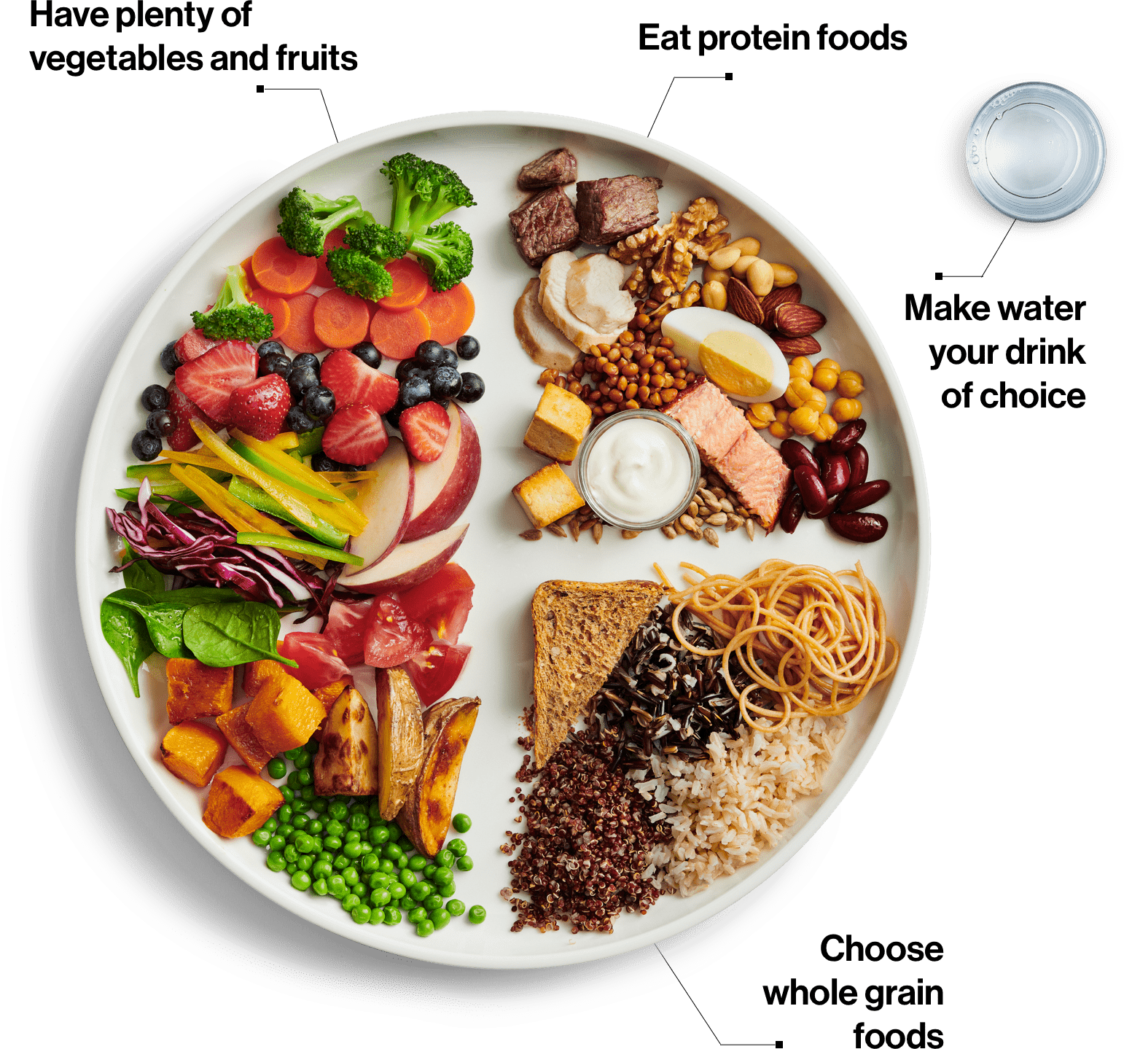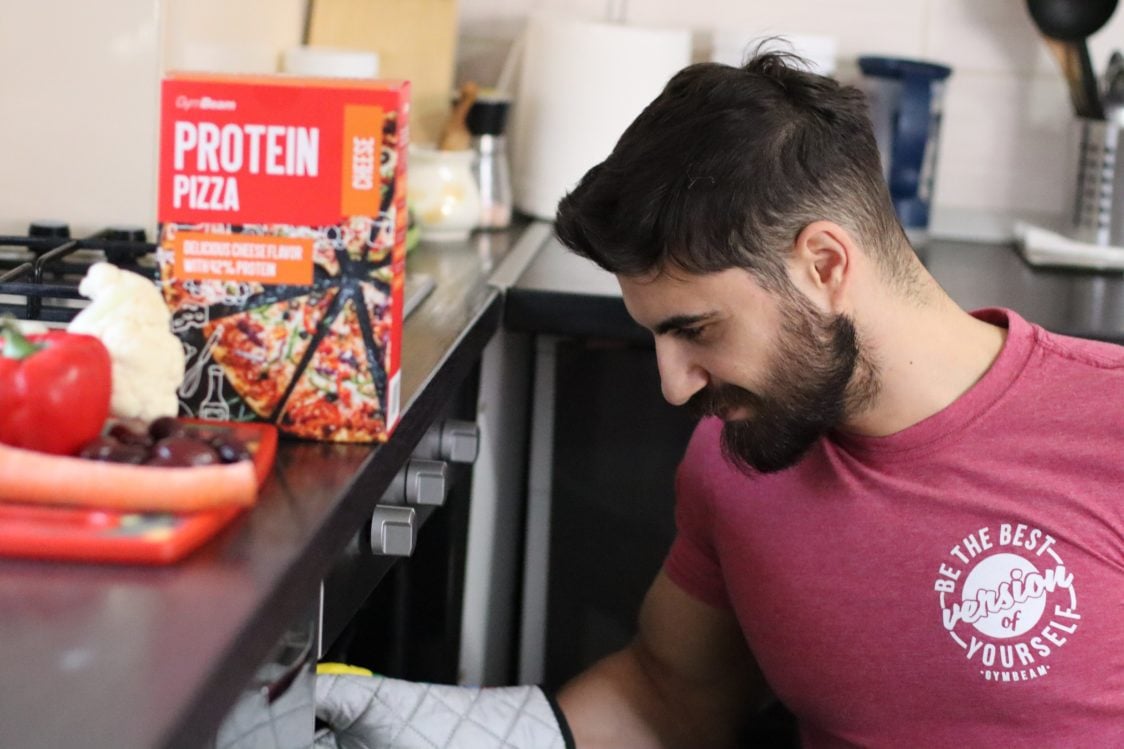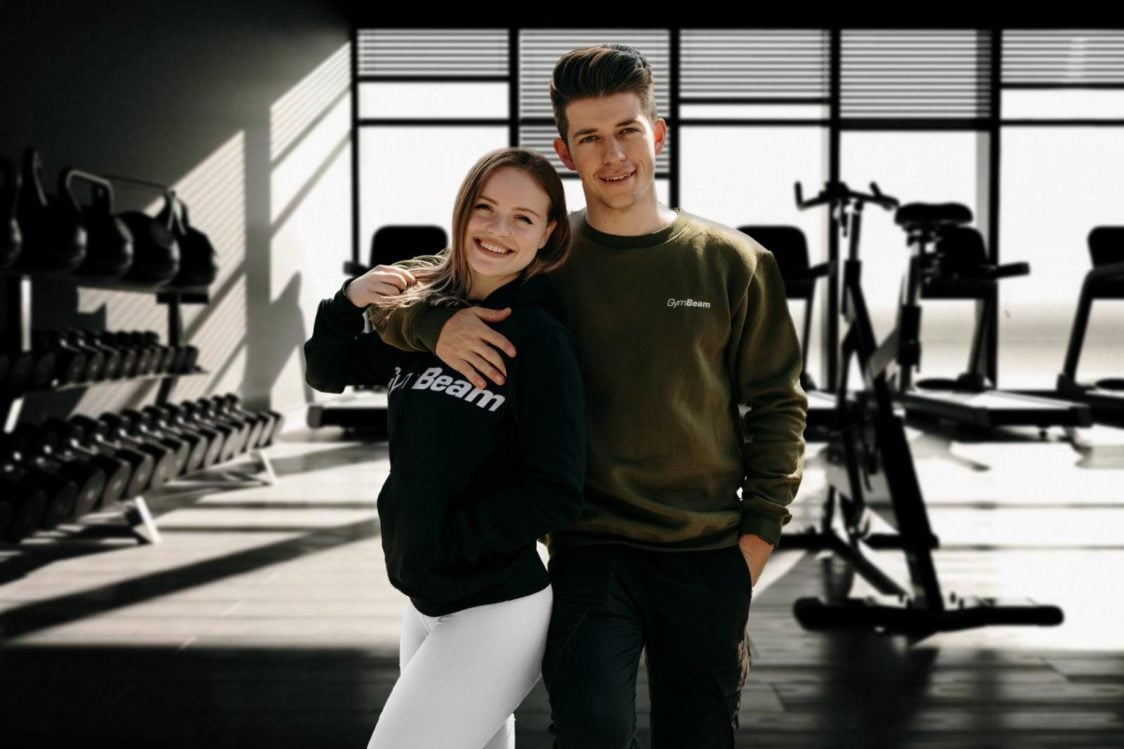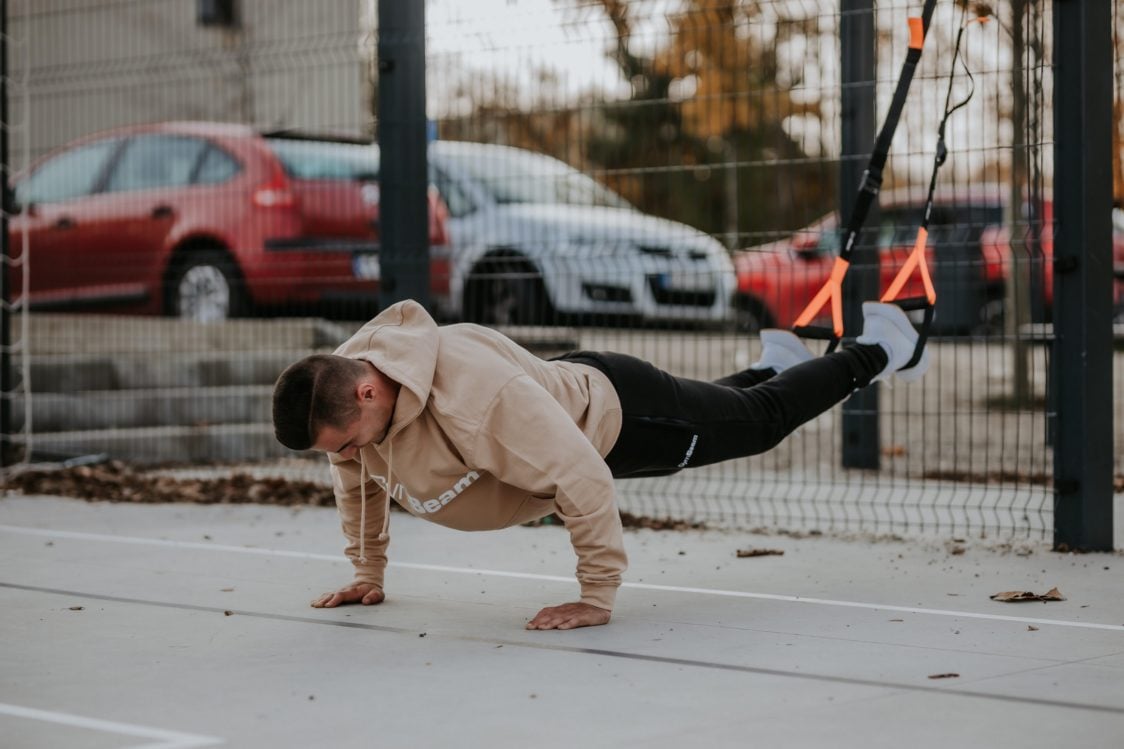Table of Contents
You know that feeling when you wake up in the morning, and you feel something new is in the air, fresh, and you hope that today is finally the day when it’s a perfect time to start working on yourself. It fills your veins with a surge of new energy, joy and anticipation of great results that you may see from all your hard work in the first few weeks, but suddenly, you start to run out of juice and motivation because you can’t see the results of your efforts. You’re asking, how do you not give up, eat healthily, lose weight and exercise without having to think about it in extreme measures and sacrifice all your free time? Gradual change and the creation of new habits that will guide you on the right path take some time. Which ones are they? You will gradually learn everything and remember, you are running a marathon, not a sprint.
1. Make the decision and strive for a healthier self

“I’ll finally start losing weight from Monday,“ say the vast majority of failed dieters, revolving in a ruthless circle of dieting followed by re-gaining and the old yo-yo effect. Unfortunately, that doesn’t have much to do with a healthy lifestyle. It’s not for a week or a month, it’s for life. Only then will you do your best to live as healthy a life as possible and stay in good shape. There’s nothing to worry about, a healthy lifestyle certainly doesn’t mean drinking celery juice for breakfast, eating boiled chicken meat twice a day with rice or a salad or eating salad a thousand ways. Just start gradually improving your lifestyle in the same way as you might improve your character in your favourite online game.
But first you need to make a decision, because that’s where it all comes from. Why do you want to lose weight and exercise? Are you doing this for your life partner, doctor, family, or are you offended by an insensitive statement from someone who knows nothing about you? What is your WHY that drives your desire to go for a better self? Studies and personal experiences show that people are far more successful at losing weight when their motivation radiates directly from them and want to prove it for themselves, not for someone else. [1]
Find your why, write it down on paper or in a journal, and remind yourself of it from time to time. It could be anything that comes from you alone. And if you wonder how to definitely not start with a New Year’s resolution or any goal, read our article on the 10 Worst Ways to Start with a New Year’s Resolution.
2. Be clear about what your goal is and what you want to achieve specifically
Have you ever wondered what it means to lose weight, exercise or eat healthily? Does it mean you’re going to try to lose some weight, go for a run every now and then, or go to the gym and eat a serving of vegetables a day? When you don’t know where and why you’re going, it’s like you find yourself on a boat sailing in the open sea without a compass, navigating and leaving everything to chance. You already have your why, now you need to determine a specific, real and time-limited goal. How about starting by losing 5 kilograms (11 pounds) within 3 months? Remember that 5 kilograms (11 pounds) may not be the final goal, but just one of the milestones along the way. Write specific goals for your why. Divide them into sub-targets over weeks, months, and set a deadline in the form of check days to record your progress.
Do not fall for detoxes, instant keto diets or replacing every meal with powdered products, and if you have tried to lose weight in the past, think about why this hasn’t worked out and what tools in the form of diet and exercise haven’t suited you. If it hasn’t worked several times, it may well not work now. If you want to learn more about setting goals, read our article 5 Tips to Stay Active, Motivated and Never Stop Exercising at Home.
How to lose 5 kilograms?
daily target | weekly target | monthly targets | 3 month target |
|---|---|---|---|
| Eat 2 pieces of fruit, 4 vegetable portions a then go and exercise for 30 minutes (run, swim, cycle, strength training or go for a walk) | Lose 0.42kg (0.92 lbs) | Lose 1.7kg (3.7 lbs) | Lose 5kg (11 lbs) |
3. Start slowly and do not burnout at the start
“And from tomorrow I won’t eat gluten, sugar, lactose, carbs or fats, and I’ll undertake sport every day, sometimes twice a day.” We often just want too much from ourselves, and that’s bound to end in failure in a week, two or even a month. But it’s going to happen. Then maybe you’ll think it’s not worth it when you’re trying so hard, the results are minimal, and it costs you an enormous amount of mental and physical strength. You don’t become someone else overnight, so you can’t expect to spend all the time eating foods, the names of which you have to google, and go to the gym five times a week to do squats, deadlifts and bench press when you’ve never been to the gym before. If you live in the mindset of all or nothing, you have less chance of achieving your goal. [2]
How to start slowly? Look at what you eat, how you live and how you move. With absolute uncompromising honesty, write down everything you eat and drink for at least a week. Also note how much time you spend on sports activities, social networks, watching TV and streaming platforms, and how you spend your free time. You’ll probably be surprised that you’re not eating as healthy as you thought you were, and you might find out where all your free time is being spent.

4. Make a list of habits that prevent you or, on the contrary, help you achieve your goal
Having carefully written down almost your entire lifestyle in the form of a typical weekly cycle, you have a unique opportunity to look at habits that play for, or against you, on the way to a healthier lifestyle. When you find the ones that place obstacles in your way, think about how to gradually start breaking them down. What about putting a limit on watching social networks, Netflix or set a fixed number of larger meals during the day?
Habits, that could work against you:
- Unconscious eating and snacking, stress eating, irregular eating, evening fridge raids, procrastination or excessive monitoring of social networks and streaming services.
Habits, which could work in your favour:
- Regular diet, eating at least 2 servings of fruit and 4 servings of vegetables each day, a fixed time for sporting activity, finding ways to travel on foot more, or having an active weekend at least once per month.
You might be interested in these products:
5. Improve your diet step by step
Were you surprised by what you found in your weekly food journal? If not, you seem to have your diet almost under your thumb. It doesn’t matter where you start, but what steps you take to improve your diet.
Starting to eat foods you don’t know, copying your diet from fitness celebrities from social networks, or pouncing on a gluten-free diet is not the solution. We all live different lives in our own way, we have different habits and needs. But what will work? Small steps that will become big over time.
Work gradually to eat less so called highly industrially processed foods, which are characterized by high levels of processing, excessive salt, sugar, unhealthy fats and refined sugars. Moreover, they contain little fibre, protein, vitamins and minerals. These foods are also less satiating and have a high caloric value (energy density) in relatively small volumes, which is why they are associated with weight gain, obesity and other civilization diseases. [3]
Highly industrially processed foods typically include most fast food, potato chips, chocolate bars and other salty snacks, as well as an endless host of sweets and pastries. Increase your dietary intake of fruit, vegetables, fibre and protein. Ideally, you need to have more colours on your plate thanks to different kinds of fruits, vegetables, legumes, cereals and other food ingredients. This way, you will receive a diverse spectrum of antioxidants, vitamins, minerals and other important micronutrients.
What should your diet ideally look like at the end of each day?

And what are proteins, fats and carbohydrates?
- Protein sources: meat, fish, seafood, milk, dairy products and cheese, eggs, legumes (peas, beans, all kinds of lentils, chickpeas, edamame), pseudocereals (buckwheat, amaranth, quinoa), tofu, tempeh, nuts and seeds, vegetable meat substitutes, fine yeast, whey protein, vegetable protein, protein bars.
- Sources of fat: nuts and seeds, oils, olives, avocado and butter as a natural component of animal proteins.
- Carbohydrate sources: whole grains and cereals (oats, flour, rice, pasta, bread and pastries), pseudo-cereals, potatoes and sweet potatoes, legumes, fruits and vegetables.
It is recommended to eat at least 400 grams of vegetables and 200 grams of fruit per day, representing approximately 4-5 and 2-3 medium-sized servings, respectively. In case you are worried about sweet cravings and want to get rid of them, read our article 15 Steps on How to Get Rid of Sweet Cravings.
6. Go for meal prep and preparing food at home
Why bet on meal prep and cooking meals at home? At home, you control all the ingredients you use for cooking, and you have a perfect overview of the energy value of your meals. Studies show that the more meals you prepare or eat at home, the more chance you have of losing weight and working on better eating habits. It should be noted that you can even save a lot of money. Why can eating away from home be a problem? You simply don’t know how much and what the chef used to cook with. Often a diet salad can become a pretty decent calorie bomb because of a mayonnaise or oil dressing. [4-6]
How to start? It is not difficult at all, determine the days when you have time to prepare your food in lunch boxes for more days in advance. This cooking model has been proven to work well on Sundays and Wednesdays. On Sunday, you will simply cook more portions of two larger dishes, which you will rotate for lunch and dinner on Mondays, Tuesdays and Wednesdays. The same on Wednesdays, when you prepare bigger meals for at least Thursday and Friday. On weekends, most people have time to cook at home, but if you don’t, just make more portions. If you want to learn more about meal prep, read our article How to Effectively Prepare and Pack Meals?

7. Reduce liquid calories and added sugar
What are liquid calories, you ask? These are sweetened lemonades, mineral waters, sweetened coffee and tea drinks, juices and alcohol. Why are liquid calories a problem? In a relatively small amount of fluids, you take in large amounts of energy from sugar, alcohol and sometimes fat, while not satisfying the feeling of satiety. [7-8]
A litre of Coca-Cola contains roughly 450 kcal, Mountain Dew 480 kcal, 100% orange juice about 450 kcal and two 12° beers (1 litre) about 500 kcal. That’s an energy intake for which you could indulge in a satisfying lunch. We should be eating energy, not drinking it. A drinking regimen is ideally based on water. If you like coffee or tea, have it without any extra sugar or cream. In case you want to learn more about liquid calories, read our article Where Are Liquid Calories Hiding, and How Do These Empty Calories Prevent You from Losing Weight?
Where to find added sugar? In poor quality dairy products, pastries, chocolate, sweetened breakfast cereals or non-perishable pastries. About 100 grams of a croissant with chocolate can have something like 450 kcal. Wouldn’t you rather have a satisfying lunch than a momentary sugar rush?
8. Think about how to move as much as possible naturally

Each step counts, both in personal growth and in relation to energy expenditure. Non-exercise activity thermogenesis (NEAT) is one of the components of energy expenditure and can significantly increase metabolic rate.
How to move as much as possible?
- Find ways to make the most of your legs as a means of transport. Walk as much as possible. For example, what about walking at least part of the way to work and the rest by public transport? Replace escalators and elevators with stairs. You will also work on strengthening the legs. When a 65-kilogram female manages to walk up the stairs for 30 minutes during the day, she manages to burn something like 200 kcal and an 80-kilogram male roughly 240 kcal.
- Ride on your bike more. If possible, go for a smaller shop on your bike or on foot instead of by car.
- Do you have a dog? Take them for as many walks as you can. And if you don’t have one? You could also walk with your neighbours or friend’s dog from time to time.
- Do household chores, cleaning or gardening. By looking at your chores through the lens of calories burned, you start to approach them in a completely different way. In about an hour of brisk cleaning, an average 65-kilogram woman can burn about 300 kcal and the average 80-kilogram man can burn less than 350 kcal.
- Be active during work hours, especially if you have a sedentary job. Take a break every hour or so, stretch and at least walk around the office.
If you want to learn more about metabolism and methods to speed it up, read our article Could Your Metabolism Have Slowed Down or Be Damages? 5 Tips to Speed Up Your Metabolism.
9. Do the kind of physical activity you enjoy
Think about how much time you can spend on sports activities during the week, and what days in particular? If you look at your sample record, wouldn’t it be possible to save some of the time you spend watching shows, playing computer games, or procrastinating? Just because CrossFit or lifting weights at the gym is in vogue doesn’t necessarily mean you have to do it, too. What do you like, what kind of activity can you imagine doing in a year or two or five? Build your weekly physical activity on this sport and supplement it with the sports you’ve always wanted to try, maybe one will catch you and keep you hooked.
- Sports in the endurance category are excellent for improving overall physical condition, circulatory capacity or more efficient calorie burning for the same amount of time compared to gym workout.
- On the contrary, strength sports, led by strength training, are an ideal means to improve body proportions and body composition, muscle growth, strengthen physique or eliminate muscle imbalance.
What’s best? Ideally, a combination of both types of sporting activities, and most importantly, you must enjoy it. Depending on how much time you’re able to spend on sports during the week, schedule your workouts as a meeting that cannot be cancelled and this is non-negotiable. Ideally, do strength workout about three times a week, and at least two other sporting activities. If you are interested in how to make your home workout harder, read our article How to Make Your Home Workout More Challenging Even without Fitness Accessories?
10. Have at least one active weekend a month
At the weekend, most people have enough time to relax both mentally and physically. Spending a weekend on the bike, hiking or skiing in the mountains or walking to a nearby area sounds much better than lounging in front of the TV.
What do you get if you spend one weekend a month being active?
- You burn a lot of calories. In an hour of cycling in hilly terrain at 20-25km/h, a 65 kilogram woman can burn about 900 kcal and an 80-kilogram man can burn around 1,200 kcal. In the case of mountain hiking it can be roughly 550 kcal for a woman and 660 kcal for a man. [9]
- You relax mentally, and you can reduce the level of anxiety and stress you feel. [10–11]
- You can spend quality time with your family and your loved ones.
- You limit your time on social media and give yourself something like a “partial digital detox.”
- Overall, you will “recharge your batteries” and be more fresh for the start of the new working week.
Are you interested in how many calories can be burned by winter activities? Read our article How Many Calories Do Your Favourite Winter Activities Burn?

11. Don’t reward yourself with food for exercise and don’t eat out of boredom
A common problem with people trying to lose weight is that they overestimate their energy output and underestimate their energy intake. This means that they reward themselves for their sporting achievements with something tasty, effectively sabotaging their own efforts to lose weight. The situation is different, however, for athletes who need to replenish their energy reserves quickly and are preparing to perform at maximum capacity, and thus they need to compensate for the energy output appropriately. Below in the table you will find an overview of sporting activities and the average number of calories burned per hour of activity, with a value of around 500 kcal already representing a decent lunch or about 1.1 litres of Coca-Cola, 110 grams of a croissant with a chocolate filling or 83 grams of average milk chocolate (not a full bar). In ignorance of these patterns, it is quite easy to needlessly accept the extra energy that you have so laboriously “burnt during physical activity.”
Likewise, avoid snacking, eating out of boredom, and try to identify the triggers for emotional eating if this is something you suffer from. You can also identify such triggers and situations by using a dietary journal that you have started and can continue to maintain, it will teach you a lot. In this way, you needlessly increase your energy intake and often in the form of non-healthy foods. If you want to learn more about snacking and eating out of boredom, read our article How Is Snacking Holding You Back from Losing Weight? 11 Easy Ways to Get Your Diet Under Control.
How many calories does the average male and female burn per hour of activity? [9]
SPORT | Average 65 kilogram female | Average 80 kilogram male |
|---|---|---|
| Cycling – average speed of 20km/h | 520 kcal | 640 kcal |
| Heavy mountain biking/hilly terrain (high exertion) – average speed around 20-25km/h | 910 kcal | 1 190 kcal |
| Running at an average speed of 8km/h | 540 kcal | 660 kcal |
| Running at an average speed of 10km/h | 650 kcal | 800 kcal |
| Walking on a straight at an average speed of 6.5 km/h | 325 kcal | 400 kcal |
| Average challenging mountain hiking | 450–600 kcal | 560–750 kcal |
| Average Strength Training | 400–500 kcal | 500–620 kcal |
12. Find a partner, ask for help and don’t stop when things are not going well
The old saying goes that it’s always easier when you’re two. In the case of weight loss and exercise, this is doubly true. Studies show that people who are not alone and who try to work out with a partner have a better chance of achieving success and ultimately lose more compared to those who are on their own. Tell your family, colleagues at work, friends about your goals, and maybe someone will join you. You can also hire a coach to point you in the right direction and make the journey easier. At least, that’s ideally how it should be. [12-13]
If things don’t work out, don’t give up. No path is a straight path without obstacles, but it resembles a rather frantic mathematical function on steroids. Every time you trip, get back on track. Perfection is not important, but consistency and perseverance are. Watch more variables than just weight, which can mask success and also focus on monitoring body measurements.

13. Start using apps that will help you
One of the best nutrition directions you can take is to record your food into nutritional applications like MyFitnessPal or Yazio. You will learn to better estimate food portions just for you. You may even discover hidden calorie bombs in your diet.
If you don’t have any exercise experience, you’re starting with a clean slate, and you don’t want to work with a personal trainer, you might need a variety of apps to help you with your workout. For example, you can try Runtastic, Freeletics or 8fit. A number of meditation applications can assist to improve mental health, this being led by the most widely used which is called Calm.
14. Keep a journal and give it time
Do you remember in the beginning when you wrote your diet in your journal? Go ahead and write down your feelings as to why you might have eaten a whole pizza, a bag of chips or a bucket of ice cream. It makes it easier to find the triggers for your actions and to work on eliminating them. Write down what you did and failed to do on that day. Praise yourself and possibly think about how to make things better.
It’s a cliché, but remember that a journey is a destination and a healthy lifestyle doesn’t have a finish line. It’s a process where you pick up healthy new habits, remove the unhealthy ones, and enjoy the ride to a healthier self.
15. Be consistent, not perfect
Don’t want to be perfect, precise and follow everything 100%. It’s not about that. Work slowly to improve your lifestyle, do not slack off, be patient, persistent and consistent. It’s a lifetime marathon, not a 100-metre sprint. The tortoise once defeated Achilles himself.

What is the lesson?
Starting to lose weight, exercise or eat healthier is no rocket science as it may appear. You just can’t fall for the empty promises of detoxes, instant diets and other methods promising to lose 10 kilograms (22 pounds) within 5 days. Everyone has a different starting position and therefore universal programs do not apply to everyone. It’s about continuous and slow lifestyle changes and improvements, which we all have somewhat different. And last but not least, it’s going to take time. But the things that are worth living for always take time.
And what helped you start exercising, losing weight and eating healthier? Share your advice and tips with us in the comments. If you liked the article, promote it by sharing it, so that even your friends learn how to start eating healthily, losing weight, exercising and sticking with it.
[1] Pearson, E. S. – Goal setting as a health behavior change strategy in overweight and obese adults: A systematic literature review examining intervention components. – https://doi.org/10.1016/j.pec.2011.07.018
[2] Teixeira, P. J., Silva, M. N., Mata, J., Palmeira, A. L., & Markland, D. – Motivation, self-determination, and long-term weight control. – https://doi.org/10.1186/1479-5868-9-22
[3] Hall, K. D., Ayuketah, A., Brychta, R., Cai, H., Cassimatis, T., Chen, K. Y., Chung, S. T., Costa, E., Courville, A., Darcey, V., Fletcher, L. A., Forde, C. G., Gharib, A. M., Guo, J., Howard, R., Joseph, P. V., McGehee, S., Ouwerkerk, R., Raisinger, K., … Zhou, M. – Ultra-Processed Diets Cause Excess Calorie Intake and Weight Gain: An Inpatient Randomized Controlled Trial of Ad Libitum Food Intake. – https://doi.org/10.1016/j.cmet.2019.05.008
[4] Tiwari, A., Aggarwal, A., Tang, W., & Drewnowski, A. – Cooking at Home: A Strategy to Comply With U.S. Dietary Guidelines at No Extra Cost. – https://doi.org/10.1016/j.amepre.2017.01.017
[5] Wolfson, J. A., & Bleich, S. N. – Is cooking at home associated with better diet quality or weight-loss intention? – https://doi.org/10.1017/S1368980014001943
[6] Mills, S., Brown, H., Wrieden, W., White, M., & Adams, J. – Frequency of eating home cooked meals and potential benefits for diet and health: Cross-sectional analysis of a population-based cohort study. – https://doi.org/10.1186/s12966-017-0567-y
[7] DiMeglio, D. P., & Mattes, R. D. – Liquid versus solid carbohydrate: Effects on food intake and body weight. – https://doi.org/10.1038/sj.ijo.0801229
[8] Mattes, R. D., & Campbell, W. W. – Effects of food form and timing of ingestion on appetite and energy intake in lean young adults and in young adults with obesity. – https://doi.org/10.1016/j.jada.2008.11.031
[9] Compendium of physical activities – https://sites.google.com/site/compendiumofphysicalactivities/Activity-Categories/winter-activtities
[10] Kandola, A., Vancampfort, D., Herring, M., Rebar, A., Hallgren, M., Firth, J., & Stubbs, B. – Moving to Beat Anxiety: Epidemiology and Therapeutic Issues with Physical Activity for Anxiety – https://doi.org/10.1007/s11920-018-0923-x
[11] Driver, H. S., & Taylor, S. R. – Exercise and sleep – https://doi.org/10.1053/smrv.2000.0110
[12] Gorin, A., Phelan, S., Tate, D., Sherwood, N., Jeffery, R., & Wing, R. – Involving support partners in obesity treatment. – https://doi.org/10.1037/0022-006X.73.2.341
[13] Rackow, P., Scholz, U., & Hornung, R. – Received social support and exercising: An intervention study to test the enabling hypothesis. – https://doi.org/10.1111/bjhp.12139


Add a comment